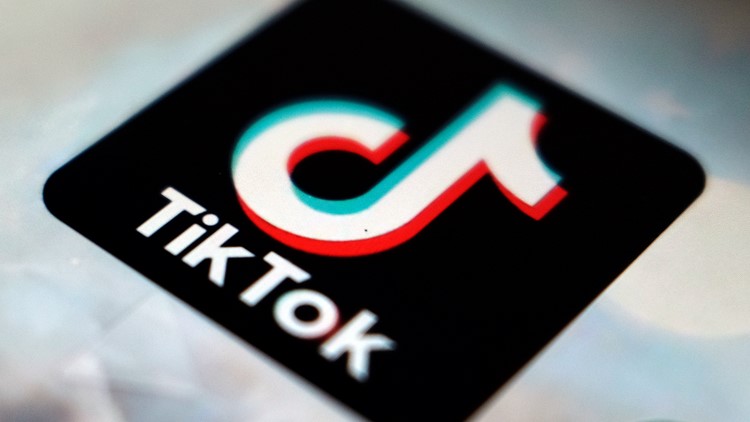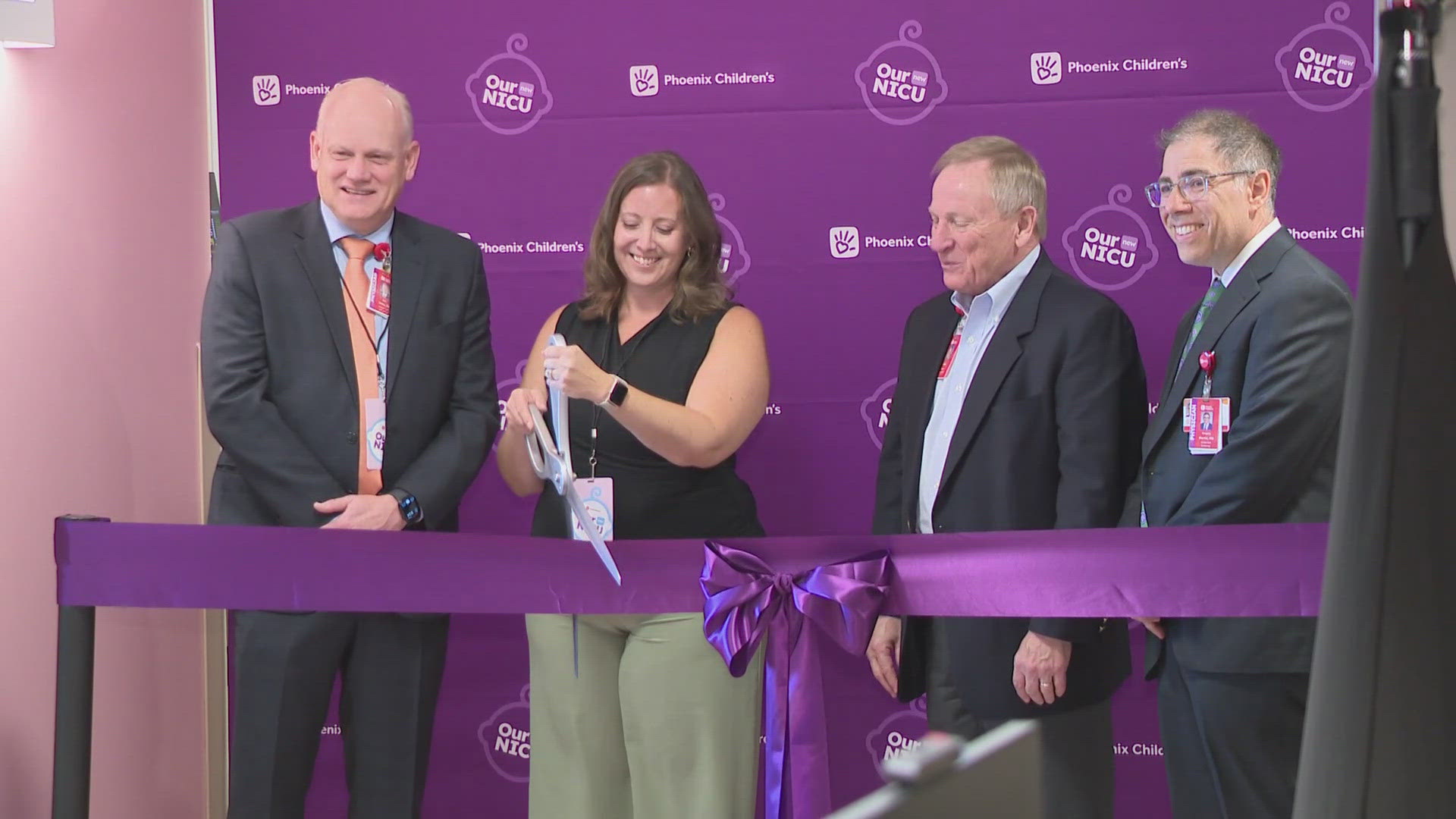PHOENIX — Sarah Grado's oldest son noticed his Instagram feed was populated with sad, depressing videos. It made him not want to open the app, let alone scroll and engage with the posts.
Grado is the chief programs officer with Arizona-based health and wellness organization notMYkid, and she works with teens and families every day, covering topics like substance use, mental health and technology life balance.
Grado said she has seen a lot of teens struggle to find balance with technology. Especially with pervasive new ways of grabbing a consumer's attention online, like the algorithms that keep people watching similar content day after day her son was experiencing, teens have a lot stacked against them when it comes to social media.
“He’s like ‘I don’t even want to look at that because I don’t want to feel like that,’” Grado said. “I’m just happy he was able to recognize that it is his algorithm, it's trying to push this thing.”
Grado isn't alone. Parents, educators, clinicians and teens are all being confronted with the positive and negative aspects of mental health information being shared on social media — because not all mental health videos are created equally.
Psychosomatic social contagion
A recent study published by Comprehensive Psychiatry talks about a growing phenomenon called "psychosomatic social contagion," which is the way in which teens, particularly young girls, are finding community among people talking about disorders or mental health issues. These communities allow teens to express extreme negative emotions and can even glamorize rare psychiatric diagnoses — even if the teens themselves are not formally diagnosed.
According to an article from Psychiatrist.com, some digital creators make "undiagnosing" videos, where a creator will list reasons — often based on stereotypes — why they can't have a disorder they have been diagnosed with. For example, a female creator saying she cannot have ADHD because only men can be diagnosed with ADHD.
Another version of the videos mental health advocates are sounding the alarm on are self-diagnosing videos. Videos where teens list symptoms they identify with and diagnose themselves with various diseases or disorders. These videos often glamorize true mental health struggles and create a "sick-role subculture" on social media.
"[Teens] can find an audience for anything they want to do. Anything. Any maladaptive behavior, they can find an audience for," Jody Christiansen, a licensed professional counselor specializing in child, adolescent and family counseling, said. "They can find a group of people that do the same thing and encourage them to continue to do it, and so it feels OK. When you do something in a group... it feels less maladaptive."
Social media is not a diagnosis
Christiansen has worked in both private practice and with schools, working with young children, teens and families. On social media, teens may find videos with "advice" on various mental health challenges from other teens or adults, Christiansen said. But without a clinician's perspective, the "advice" is just information, not a diagnosis.
"If you're finding 'answers,' and I put that in quotation marks, to the concerns or questions you have online... how likely are you to go and seek other help for that? You aren't," Christiansen said. "I get very concerned. There's a lot of lay people on the internet, adults and teens... that are offering free 'advice' for teens and preteens on how to take care of this or that."
The ways and speed in which information is relayed — from short videos on TikTok to posts on Instagram — is what makes the trend of diagnosing yourself or "undiagnosing" different today, Grado said.
Teens also do not have a fully developed pre-frontal cortex — in fact, most adults in their early 20s don't even have a fully developed pre-frontal cortex, Christiansen said. This brain development is crucial for seeing the big picture, such as how a video applies to their lives in the long run.
Not all negative
But social media can provide communities for teens, allowing them to connect with others and share experiences. Videos documenting a person's mental health journey can create more awareness for mental health issues, inspire teens to take a more proactive approach to their mental health and encourage people to open up about their struggles.
Grado said when she was a teen, she would have loved to have the access to technology that allows teens who are struggling with addiction, mental health or other challenges to connect.
“It is a blessing that teens now can get more information if they feel a certain way,” Grado said. “When I was growing up, I didn’t know what depression was, and unless I actually went to a doctor and talked to a professional – and I grew up in a rural community, so there weren’t a lot of those there – I didn’t have a lot of access to learn that what I was going through was not something wrong with me but it was depression.”
Using social media well
Social media is also a big part of day-to-day life, which is why both Christiansen and Grado said they don't support never using social media — they support using it mindfully.
At the school where Christiansen works, students put their phones in "sleeves" which unlock at the end of the school day. Christiansen recommends parents wait until their child is older to introduce them to social media, as well.
"As a teenager gets older, they have a bit more of an ability to be discerning," Christiansen said. "Age is definitely important."
In addition to monitoring social media, Christiansen said utilizing reputable websites such as the American Heart Association, the Mental Health Foundation and the Mayo Clinic can provide teens with invaluable resources.
For parents, Grado said consistent conversations is key — to keep kids safe online and in real life.
“Make it okay to talk about these things,” Grado said. “You don’t have to have all the answers, but the most important thing is to listen.”
Watch 12News+ for free
You can now watch 12News content anytime, anywhere thanks to the 12News+ app!
The free 12News+ app from 12News lets users stream live events — including daily newscasts like "Today in AZ" and "12 News" and our daily lifestyle program, "Arizona Midday"—on Roku and Amazon Fire TV.
12News+ showcases live video throughout the day for breaking news, local news, weather and even an occasional moment of Zen showcasing breathtaking sights from across Arizona.
Users can also watch on-demand videos of top stories, local politics, I-Team investigations, Arizona-specific features and vintage videos from the 12News archives.
Roku: Add the channel from the Roku store or by searching for "12 News KPNX."
Amazon Fire TV: Search for "12 News KPNX" to find the free 12News+ app to add to your account, or have the 12News+ app delivered directly to your Amazon Fire TV through Amazon.com or the Amazon app.
Up to Speed
Catch up on the latest news and stories on the 12News YouTube channel. Subscribe today.



